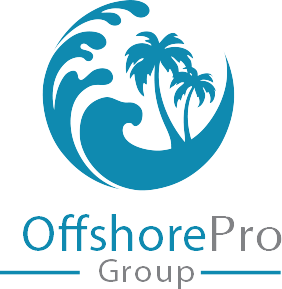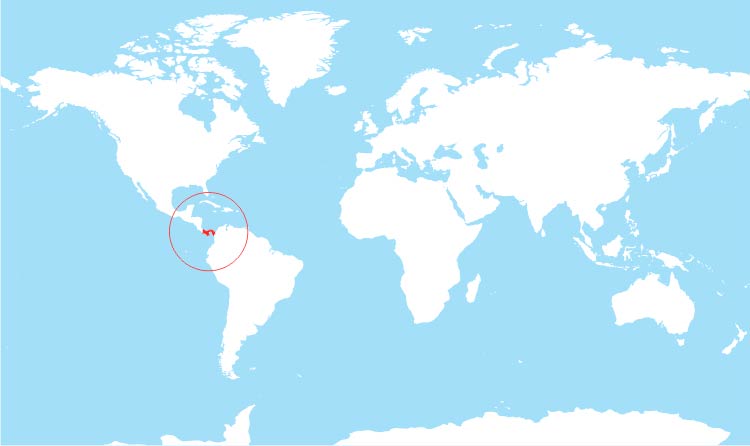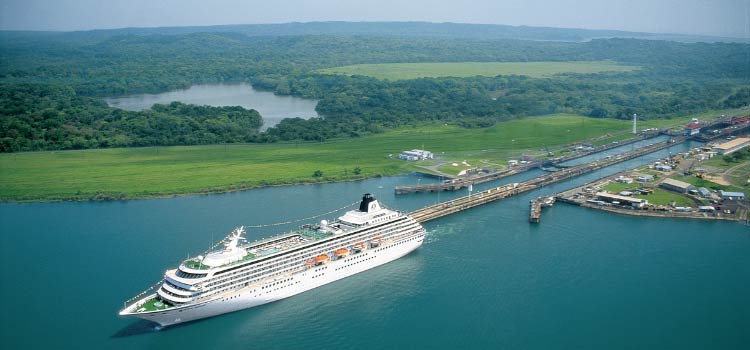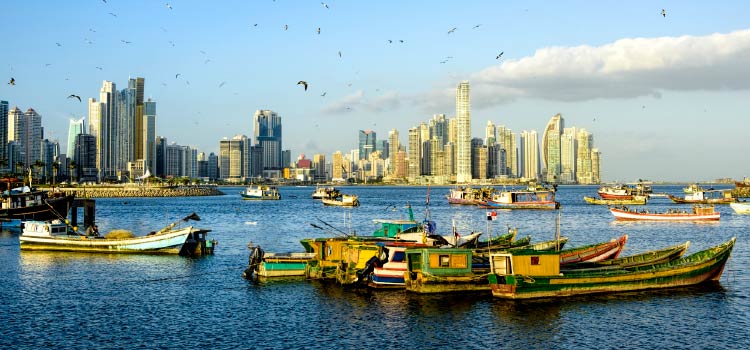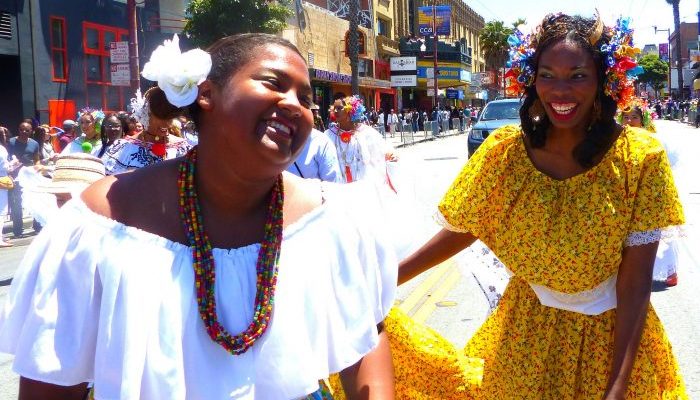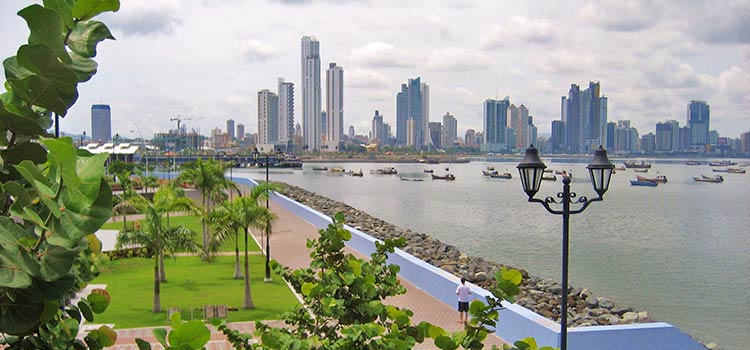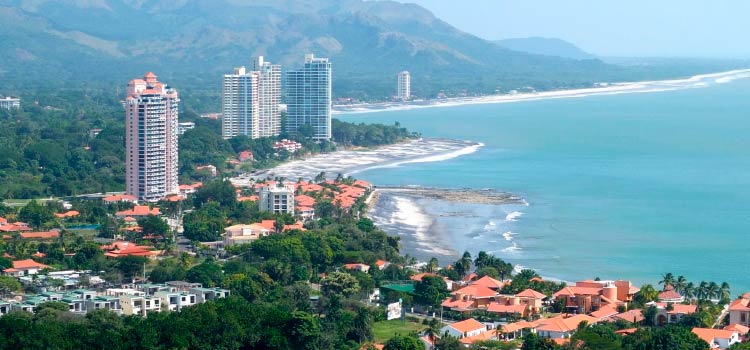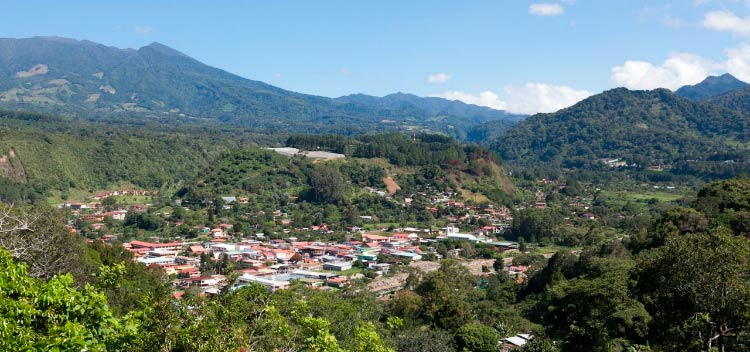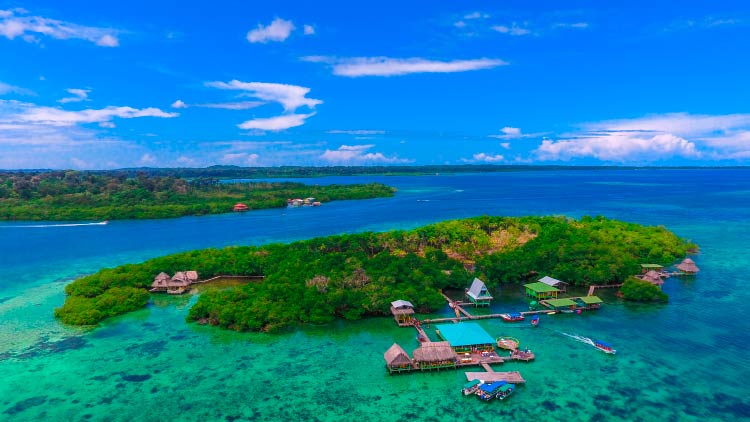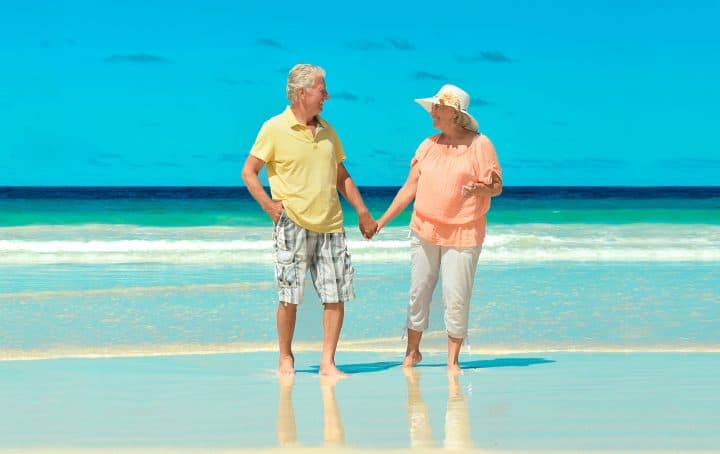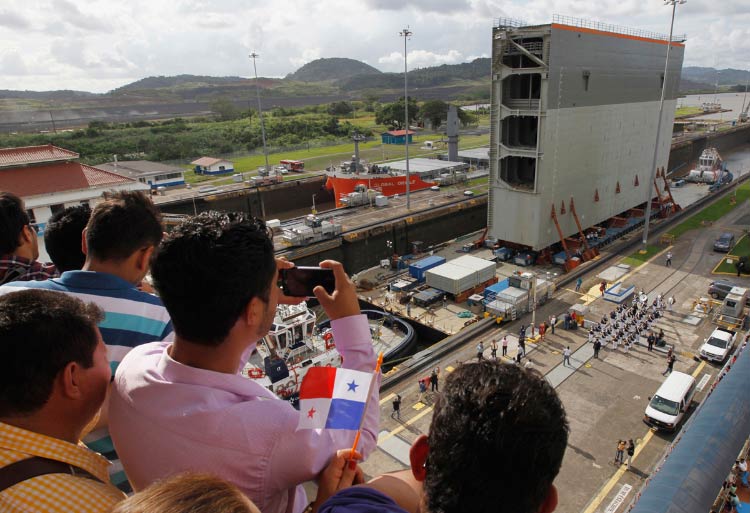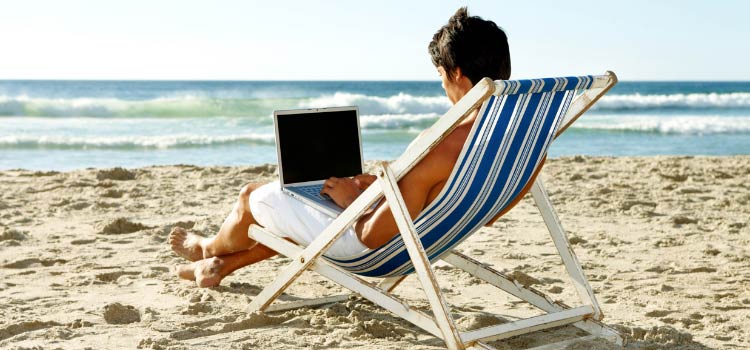Life in Panama: an overview
Anyone who is thinking of relocating to a warm country should consider moving to Panama in the first place. There are a number of great reasons to immigrate to Panama: the unique geographical position of the country, its eternal summer, its friendly people, its booming economy, its vast choice of locations to live at, its low cost of living, its fantastic healthcare system, and other wonderful opportunities that Panama offers.
We would like to give a brief overview of how it feels to live in Panama. Some ‘glances from inside’ provided by expats to Panama are given below. This article should not be thought of as a complete guide on moving to Panama but it does offer some useful information. Offshore Pro Group will be happy to give you thorough consultations on the things you have to know before moving to Panama. Please apply for our services by writing to us to [email protected] and we will provide some essential tips to you. However, we suggest that you should read the text below first.
Panama’s geographical location
Panama is a narrow strip of land connecting North and South Americas. It lies between Costa Rica in the west and Columbia in the east. Its northern shores are washed by the Atlantic Ocean and its southern shores by the Pacific Ocean. The territory of the country is 75,517 square kilometers (29,157 sq. miles), which makes it a bit smaller than South Carolina in the USA and a bit larger than the Republic of Ireland in Europe. The population of the country is about 4 million people.
Once in Panama City – the capital of the country – you can go for a swim in the Gulf of Panama in the Pacific and after a couple of hours you can find yourself bathing in the Caribbean Sea in the Atlantic. There are some points high in the mountains where you can see both Oceans at a time on a sunny day. No other country on the planet provides for such unique opportunities.
Expats report that nothing is too far away in Panama. It rarely takes more than one hour to get from point A to point B in the country by bus or car. Even if you live in the mountains right in the middle of the land strip, it will not take you long to go down to either of the shores in case you want to lie on the beach and relax.
The weather in Panama
Panama lies 900 kilometers (600 miles) above the equator and in has a warm subtropical climate. There are neither summers nor winters in this country. Instead, there is the dry season (la seca) from December to April and the wet season (la lluviosa) from May to November. The temperature remains very much the same regardless of the season. In the coastal areas is it stable at about 30o Celsius (85o Fahrenheit) while the mountain areas are a bit cooler.
Rain falls nearly every day during the wet season in such locations popular with expats as Panama City, Bocas del Toro, and Coronado. Stormy weather occurs regularly but Panama is off the hurricane belt so serious natural disasters hardly ever happen there.
It the dry season it is quite hot and humid in the coastal areas and on the islands around Panama. A former resident of Florida said that it was a little too hot in Panama City even for him and the ocean breeze felt like a true blessing on an especially hot day. Another resident of this city reports that he prefers keeping indoors during the daytime and tries to leave home only after the sunset. As Panama is located close to the equator, it gets dark very much at the same time throughout the year, at around 6 p.m. The shops are still open and walking through the streets at this time of the day is safe enough.
Many immigrants to Panama also choose to reside higher in the mountains in such places as Boquete, Volcan, or El Valle de Anton. It is comparatively drier in these areas in the wet season and the temperatures are lower than those on the coasts during the dry season. At the elevation of over 500 meters (1,600 feet) above the sea level the temperature drops by about ten degrees in the evenings, which means you do not feel hot while sleeping. Whereas summer never ends in the lowlands in Panama, it feels like everlasting spring in the mountain areas.
What makes Panama just perfect in terms of the climate is that there you can choose the temperature that is comfortable for you. The higher you climb the cooler it becomes. The Panama weather records show that the temperature has dropped below the freezing point in the highest places once or twice in history. You like it hot? Dwell on the coasts. You want it cooler? Simply lodge in the mountains. That is it.
Panama economy
The following four sectors of economy generate the largest portions of income to Panama state budget: the Panama Canal, the banking sector, the tourist industry, and the ship construction and registration industry.
The Panama Canal
The Canal makes Panama’s geographical position strategic as it connects the Atlantic and the Pacific Oceans. Ships sailing from Asia to Americas and back save a lot of time and tons of fuel passing through the Canal. It has been extended recently and its transit capacity has been doubled.
The Panama Canal was built more than a hundred year ago. However, it was administered by US companies until 1999. Since then, the Canal has been under full control of the Panamanian Government providing a stable income to the country’s national budget.
Besides, the Colon Free Trade Zone is located at the Atlantic entrance into the Canal that is the second largest such Zone in the world. (Only Hong Kong is a larger Free Trade Zone.) Resident business companies in Colon receive huge tax benefits and some of them make colossal profits. Any corporation engaged in international trade should find residing in this Free Trade Zone extremely lucrative.
The banking sector in Panama
Panama has no Central Bank, which means that the prices of banking services including loan interest rates are completely market-driven in the country. This attracts many foreign banks to Panama of which there are currently over a hundred there. As of today, the amount of capital kept in Panamanian banks is probably second only to Switzerland. While the rest of the world was shaken by the global financial crisis in 2008, banks in Panama felt calm and secure. Taxes paid by these banks comprise a considerable portion of income to the national budget.
Tourism in Panama
For decades, Panama has been one of the top countries to visit with all international travelling organizations. The following features attract tourists to the country: fantastic Panama beaches on both coasts; absolutely gorgeous tropical nature; eternal summer; and comparatively low costs of tourist services.
Panama offers a number of tourist activities. The capital of the country is interesting by the amalgamation of historic sites to be found in the Old Town and the super-modern shining skyscrapers of glass and steel in the modern districts. Nightlife in Panama City is vibrant and diverse. There are dozens and dozens of nightclubs, discos, bars, casinos, and so on. Most tourists stay in the capital when they come to Panama.
Various beach resorts are, of course, very popular with tourists in Panama too. White sand, bright sunshine, and the warm ocean bays and gulfs are perfect for relaxation and lazy pastime. The total length of Panama coastline is almost 2,500 kilometers (over 1,500 miles) and there are hundreds of beaches to choose from.
Those fond of ecotourism will also find some splendid opportunities in Panama. There is a hiking trail over 1,000 kilometers (600 miles) long that runs from east to west. There are dozens of rivers mostly in the mountains where you can go kayaking or rafting through the primeval tropical forests. The mountain tops where you can climb give fantastic views of many Panama’s natural wonders.
Tourism industry development is one of Panama Government’s top priorities. Infrastructure development and improvement projects are completed one after another in the country. New tourist routes are put into place, roads repaved, beaches cleaned, and service quality improved… A lot of effort is spent in Panama on attracting more tourists to the country.
Ships flying Panama colors
There are several shipyards in Panama where new ships are built. However, the country makes more money by providing ‘the flag of convenience’ services to ship owners from all over the world. Almost 23% of all marine vessels ploughing the seas are registered in Panama, which makes them Panamanian ships, according to the international marine laws.
Some fifty years ago, Panama was a poor third-world country in the full sense of the word. However, beginning the 1970s, serious political and economic changes have been introduced that allow Panama’s economy to steadily grow year after year. At the current moment, Panama’s GDP per capita is the highest in the whole of Latin America. So if you are thinking of moving to a warm country, relocating to Panama is the first thing you should consider.
It would be a mistake to preserve an outdated image of Panama in your head. Today it is a democratic presidential republic with regular national elections. Governments change as peacefully in Panama as they do in contemporary western democracies. Besides, Panama is not considered an offshore jurisdiction anymore either. Yes, it has had to adapt its legislation to the international standards under the pressure of the world financial authorities. But as it has, it is now totally clean in the eyes of those authorities. Panama is off all the black and grey lists and no sanctions are applied to it any longer.
Even though the United States do not own the Panama Canal anymore, Panama remains a country of the US ‘strategic interests’. A lot of American shareholders’ money is there and the US presence in Panama is more than obvious. Of course, close cooperation and warm relations with such a powerful and economically strong neighbor only do good to Panama.
The national currency – the balboa – was incepted in the country in 1904 when it became independent from Columbia. However, in 1934, the balboa was pegged to the American dollar and the exchange rate has been 1:1 ever since. The dollar has the status of an official currency in Panama. There are no balboa bills: all payments are made in dollars and only balboa coins are used.
All these economic and political factors allow Panama’s GDP to grow stably by 5% to 6% annually on average even though the growth exceeded 7% in some recent years. The country’s economy is constantly improving as well as its living standards. Without doubt, a lot is still to be done to let Panama catch up with the well-developed states, but the country is clearly on the right path and it has a very promising future.
Panama culture and Panamanians
Strong as the American influence on the country may be, Panama is not a “51st state” of the USA. If you move to Panama from North America or Europe, you should expect to find a culture there that is different from your own.
The population of Panama is comprised mostly of the decedents of Spanish conquistadors and native Indians. At the same time, you can meet people of all nationalities and skin colors in the streets of Panama City. Due to the Government immigration policies aimed at attracting foreign capital to Panama, the country has become a truly international place. There you will find no discrimination by race or nationality whatsoever. Everyone lives in peace with their neighbors.
Actually, Panamanian culture is very much similar to the cultures of other Latin American states. Such cultures can be referred to as more traditional and more patriarchal than the contemporary European or North American cultures. One feature typical for Latin cultures is male domination. A young Caucasian woman will not be advised to move to Panama on her own. She may run the risk of sexual harassment or even abuse. At the same time, family values are held high in Panama and married couples enjoy full respect.
Another fact that irritates some expats to Panama is that things are usually done quite slowly in the country. Panamanians are rarely in a hurry. Service in restaurants and other suchlike places is slower than Europeans and North Americans are used to. Buying food in the farmers’ market takes Panamanians a considerable amount of time. They have to spend a few minutes talking to every acquaintance of theirs that they run into while walking through the aisles. Being late for an appointment is nothing out of the ordinary for them. If you agreed to meet with a Panamanian at a certain time in a certain place, do not be surprised if he or she does not turn up at all. One expat notes that he has learnt that ‘mañana’ does not actually mean ‘tomorrow’ in Panama. It means ‘not today’.
Some immigrants enjoy the cultural differences that they find in Panama, others are annoyed by them. The latter, actually, suffer from their own misconceptions. When relocating to Panama, you have to be prepared that things do not work the same way there as they do at home. If you are ready to face some new ways, customs, and traditions, you will be able to adapt to the Panamanian way of living without much trouble. Perhaps it is the Panamanian sun that makes local people very friendly, as a general rule.
Crime in Panama
Panama has been recognized as the safest country in Latin America by various international organizations dealing with the issues of safety and law enforcement.
All American immigrants to Panama, for example, assert in unison that they feel safer in this country than they do at home. One expat told an interesting story. He married a Panamanian woman and they had lived in the US for some four years before they decided to settle down in Panama. His wife was robbed twice in the USA during their stay there while she has never been robbed at home during the twenty plus years of her life in Panama. This is indicative of the comparative crime rates, is it not?
Small theft, pick-pocketing, and other minor crimes do sometimes happen in Panama but they happen everywhere else. If you leave your sell-phone unattended on the table in a busy café while you are picking your drinks at the bar, somebody can lift it. However, the rates of violent crimes, such are murder or robbery, are kept at a very low level in Panama.
Some visitors to Panama say that the large number of armed police officers in the streets and the bars on the house windows make them feel nervous. These serious anti-crime measures may be suggestive of the fact that there is a lot of criminal activity going on in Panama. But there is not. You have to remember that it is a Latin American culture and that the mentality of Panamanians differs from that of North Americans or Europeans. Their blood is hotter and the sight of a policeman with an automatic gun or heavy protection bars on the windows helps them stay in control.
In general, crime rates are lower in the countries where the economies are thriving in comparison to poorer states. As Panama economy is growing rapidly, it is also going to thrive before long. When Panama turns into a rich well-developed country, the excessive number of police officers in the streets may become unnecessary.
Places to live in Panama
Immigrants to Panama usually choose to live in one of the following four areas in Panama: Panama City, beach resorts, the mountains, or the islands off the Pacific and Atlantic coasts. Let us take a balanced look at all these options one after another.
Living in Panama City
Panama City is a large vibrant modern megalopolis. Its area is 275 square kilometers (106 sq. miles) and its population is about 1.5 million people if one takes the suburbs into the count. It is not as large as some other world capitals but in terms of its infrastructure, amenities, and the comfort of living, Panama City is inferior to no other large city on the planet. It has everything: historic buildings in the Old Town and tall skyscrapers in the new districts; botanical gardens and seaside promenades; numerous restaurants and nightclubs; museums and movie theaters; world-class hospitals, private schools, and several universities, and so on, and on, and on.
The only thing that Panama City does not have is a clean beach. However, some nice beaches can be found within less than an hour drive across the bridge over the Canal (Playa Bonita) or a 45-minut ferry trip to Taboga Island. Besides, a few-billion infrastructure development project has been launched by the Mayor’s office recently. The aim of the project is to clean the city beaches and the water near them to make them lie-able and swimmable again. When this project is completed after a few years, the prices of the real estate in the vicinity will be rocketing though.
Panama City enterprises bring more than half of the overall income to the national budget. Most Panamanian and international corporations, banks, and other business entities have their head offices there. If you intend to do business in Panama, the capital city is certainly the first and most promising option to consider. (It is not the only option, however: the Free Trade Zones of which there are several in Panama also offer some enticing conditions.)
Living in Panama City is far from boring: the main action is definitely there. If you are young and enterprising, Panama City is the place to reside in Panama for you. You will enjoy the pace of life that it offers and the large number of entertainment opportunities. At the same time, some may find that the climate there is a bit too hot and humid for them.
Living at the beach in Panama
Many expats prefer to reside in beach communities in Panama such as Coronado, for example. The place is about one-hour drive to the west from Panama City.
Well-to-do Panamanians have been using Coronado as a get-away from the city hustle and bustle for many years. If you choose to lodge there, you will live in the company of both natives and expats. It is a quiet gated community (there is a police checkpoint at the entrance) that offers a laidback lifestyle. At the same time, everything you need for a comfortable living is there. There are a couple of supermarkets and numerous small stores that carry a variety of food items. In the supermarkets you will find imported products that you are used to and the small stores offer mainly local food that is pretty good to the taste.
Clothing and footwear shops are also plenty. You can buy locally made items or visit some fancy boutiques that can be found in Coronado. There are pet stores, veterinary clinics, spa and yoga salons, organic food stores, bookstores carrying books in English, a dollar store, mobile phone operators, high-speed internet, banks, a post office… Literally everything!
Bars, cafes, and restaurants are plentiful as well. You can enjoy the local cuisine and a number of other national cuisines too. There is a Mexican, an Italian and a Chinese restaurant and many cafes that serve dishes typical of other countries. You can certainly find the place to eat that you like more than others.
Local residents love to gather in cafes and restaurants in the evenings and have some fun together. Everyone is relaxed and friendly. People will play the musical instruments forming ad hoc bands, sing karaoke, dance to salsa music and just have a good time. Such gatherings are the most popular form of socialization in Coronado.
There are two beaches in the area that can be quite crowded on the weekends as many people come from Panama City to relax and lie in the sun. On some weekdays, however, you may well find yourself alone on the beach. Usually there will be two or three elderly couples walking along the shore. The water in the Gulf of Panama is always warm and the waves are seldom too high.
You will be satisfied with the choice of accommodation types in Coronado too. You can buy or rent a small country-style house on a small land lot or a large mansion. You can put up at a nice little family hotel or at a huge high-rise condominium that is under security surveillance 24/7. The choice is yours and the opportunities are plenty.
Living in Coronado with school-aged kids is also not a problem. There are several schools in the town including an English school and an international one. Hospitals, dental clinics, a fire brigade and a police station are also there. All these facilities make Coronado a perfect place to live at. There you will have pretty much all the conveniences of a big city and the peace and quiet of a small village.
There are numerous other beachfront communities in Panama, of course. Some smaller residential complexes will have no English school, others will lack a large supermarket, in still others a pet store or a dental clinic will be missing. However, nothing is too far away in Panama and living in a comfortable house or apartment located a few yards away from the beach is many people’s dream without any doubt.
Living in the mountains in Panama
Lodging at a higher elevation in Panama is a very good option for those who dislike hot weather. The higher you climb, the cooler it becomes. The place in the mountains that is the most popular one with expats in Panama is Boquete in Chiriquí province. It is located in the green forests at about 1,200 meters (nearly 4,000 feet) above the sea level. Today more than half of all town residents are foreigners.
Many of the foreign residents of Boquete are retirees from the USA and Canada. However, there are quite a number of people from Columbia and Venezuela and different European countries living in this town as well. Far from all of them are pensioners: younger expats are also numerous in Boquete and they also form their own groups and societies just the way their older fellow citizens do.
In addition to the nicer weather, one more factor that makes the place so attractive for so many people is the breathtaking and jaw-dropping views that it offers. Very few things in this world compare in beauty to the views of the mountains covered with pristine tropical forests with rivers running through the valleys.
The choice of housing in Boquete is also very satisfactory. There you can find everything from cozy little farmhouses to five-star hotels. The expats residing in this town especially appreciate the quality of the food produced locally and say that the water is perfectly potable. As far as household items and clothing are concerned, you will have no trouble obtaining those in Boquete either.
The pastime most popular with the immigrants living in Boquete is walking in the mountains and through the local farms. Apart from that, there are endless social events such a fairs and festivals organized by foreign residents.
The life is Boquete is as relaxed and slow-paced as that in Coronado, only that it is set in different scenery. At the same time, if you want to lie on the beach, driving to the coast to the city of David – the second largest city in Panama – will take you only half an hour. People walk or ride bicycles to move around Boquete as the place is not large at all. You need a car there only if you want to drive to David or Panama City. But then again, buses run regularly to these destinations so you probably do not have to have a car at all if you put up at Boquete.
The cost of living in Boquete is a bit lower than that in Panama City even though it has been growing as more and more foreigners are coming to live there. It should be borne in mind that there is a direct correlation between the number of foreigners living in a city or town in Panama and the cost of living. The more immigrants there are the higher are the housing, service, food, and other prices.
An experienced Panamanian guide can show you many other mountain towns with spring temperatures and amazing views where fewer immigrants live. This fact makes prices there even more affordable than those in Boquete.
Living on an island in Panama
If you are fond of water sports such as windsurfing, deepwater fishing, scuba-diving, snorkeling, and so on, you should consider lodging on an island near Panama. There are hundreds and hundreds of islands – large, medium, and small – both in the Pacific Ocean and in the Caribbean Sea.
Large islands, such as Isla Colon, the main island of Bocas del Toro archipelago, for example, will have five-star hotels and all the amenities typical of beach resort areas in Panama. And, of course, a lot of tourists too. Smaller islands will often hold fishermen’s villages. You can find accommodation on these islands as well but it is going to be something very simple. Besides, your menu will mostly be made of what you can buy from the fishermen.
There are also uninhabited islands and islets around Panama. If this is your dream, you can buy one such island and build a hut (or a mansion) there. In case you want to purchase an island, however, hiring a good Panamanian lawyer is a must. Some islands are the property of the state and you would have to go through a complicated and time-consuming procedure of change of the form of ownership before you can actually become the new island owner. Buying privately owned islands is as easy as buying a lot on the mainland but your Panamanian lawyer has to check all the ownership documents very carefully.
What is so attractive about Panama is that you can find a dwelling place in at least four different sceneries there: Panama City, beachfront resort areas, the mountains, and the islands. Please note that these are only the types of locations and each of them is diverse in itself. There are different districts in Panama City and the Old Town is dissimilar to the modern Punta Pacifica district, for instance. There are also various beach resorts, various mountain towns and villages, and of course, each island is different from other islands.
This gives a choice of possible locations in Panama that might even seem a bit too large but Panama is actually a very small country. You can take a tour around Panama and see the whole of the country within a couple of weeks. Of course, it would be a better idea to linger a while at the place that you think may become your home before making the final decision. In any case, depending on your preferences and your budget, you will certainly be able to find a place in Panama that suits you perfectly well.
Panama cost of living
The capital city is predictably the most expensive place to live at in Panama. What makes Panama City unique, though, is that it offers the same level of comfort and the same range of conveniences as major cities of North America or Western Europe but at approximately half the price.
In order to acquire a general understanding of how much living in Panama costs you have to take into account the fact that the average salary in the country is less than US$ 800 per month. Workers make US$ 500 or so but personal incomes below US$ 11,000 per year are not taxed in Panama. What is a good salary in Panama? Those making US$ 1,200 a month or a bit more are considered middle-class Panamanians. Five hundred per person will hardly see you through the month in Panama City but the income of this size is sufficient to live on in a mountain town. One thousand and two hundred dollars a month is enough to live in the capital city quite comfortably.
What attracts many immigrants to Panama is the fact that they can afford twice as much luxury there than at home regardless of the amount of income that they have. One expat who is renting a three-bedroom apartment in Panama City for US$ 1,500 a month (the standard price for the city center) says that he, of course, could find an apartment that costs as much somewhere in Kansas, but its quality would be much, much lower than that of the apartment he is renting in Panama.
Living on the beach is a bit less expensive than living in Panama – by 10% to 15% approximately. The same goes for such popular mountain towns as Boquete, for example. However, residing in a less known place in the mountains that has a smaller number of foreigners will cost considerably less than living in Panama City.
The cost of living on the islands can vary greatly. If you want to buy a private island, it is going to cost you a few million dollars. However, if you lodge in a fishermen’s hut and catch your food in the sea, such a lifestyle will certainly be very economical.
While property in Panama City in general costs twice as little as that in other world capitals (we are talking about well-developed countries here), the services cost several times less in Panama than they do in the US or the UK, for instance. A bus ride or a haircut will cost you pennies. (Literally: a bus ride within the limits of Panama City costs 25 to 35 cents.) A three-course meal for two in a fancy restaurant will cost you less than US$ 50. And that is an expensive restaurant, mind you!
As far as the food sold in the food stores is concerned, the prices vary and the cost of your menu will largely depend upon your preferences. Generally, the locally made food items are very inexpensive. If you buy your groceries in the farmers’ market, you will not spend more than a couple hundred dollars a month on food. It has to be noted that Panama turns out enough agricultural produce to feed its people. The country does not depend on imported food, which is a positive factor as it is. Besides, the quality of the locally produced food items is very good. The dishes made of domestically grown fruits and vegetables and domestically raised chicken, beef, and pork taste delicious!
However, if you want to feed on the things you are used to and buy imported food items in the supermarkets, they are not going to cost less than at home. They will even cost a bit more sometimes! For example, a half-liter bottle of Panamanian beer costs around US$ 0.80 while the same bottle of imported beer goes at US$ 3.85 approximately. You probably have to rely mostly on supermarkets while living in Panama City. Even though they carry quite a large range of local food items in addition to imported things, their prices are higher than those in a farmers’ market. Of course, different people will have different tastes but locally made food is inexpensive and healthy in Panama and on top of that it tastes good! What else is there to ask for?
Panama healthcare
A separate note should be made about healthcare quality and cost in Panama. The vast majority of Panamanian medical doctors have graduated from the US medical schools. Thus, they do not only know their medical areas of specialization very well but they also speak fluent English. Most hospitals in Panama are in association with reliable medical institutions of the United States of America and the quality of the services that they provide meets the highest international standards.
At the same time, the cost of these services is very low in Panama. One expat reports that she suddenly felt dizzy in the street and went to see a doctor in the nearby hospital. She had the doctor listen to her heart and lungs and she also had her blood pressure taken. That visit cost her one dollar.
Another expat says he once felt he needed an urgent appendicitis operation. So he rushed to the hospital where his blood was tested and an examination provided. A surgeon attended to him and interviewed him while they were waiting for the blood test and examination results. These showed that his appendix was all right and that his ailment was attributable to some other cause. So, he was given a prescription for some medicine. All he had to pay for the tests, the examination, the surgeon stand-by, and the prescription was ten dollars.
The cost of medical insurance is also quite low in Panama. You can buy an insurance policy for one year for a few hundred dollars. It is not going to cover all possible medical services or drugs, but it will cover many things anyway.
This attractive price-quality ratio of the healthcare services in Panama has brought about such an interesting phenomenon as ‘medical tourism’. People from North America and Europe come to Panama on tourist visas while their true intention is to obtain medical examinations and treatment. The Government of Panama does not mind this kind of ‘cheating’ on the part of the foreigners and even tries to promote medical tourism to the country. (The medical tourists spend money in Panama anyway, do they not?)
If we talk about the cost of living in Panama in general terms, the key phrase is probably ‘the price-quality ratio’. Hardly anywhere else in the world can you find property, goods, and services of such a high quality at such competitive prices.
Retiring in Panama
According to various international organizations, Panama is the number one retirement destination in the world. In addition to the comparatively low cost of living in the country, there are two more factors that make Panama especially attractive to pensioners.
The first such factor is the ease of obtaining a Pensionado visa. Unlike in the case of all other visa programs of the ‘residency for investment’ type, you are not required to make any flat investment when applying for a Pensionado visa. All you have to show to Panama immigration authorities is that you have a guaranteed lifetime annuity of US$ 1,000 a month. Such as a state pension, for example. If you do make a US$ 100,000 investment into residential estate, however, you will have to show that your stable monthly income is US$ 750. This reduction in the required sum of the safe income is perfectly understandable. If you have a place to stay in Panama, seven hundred and fifty dollars per month is enough to live on in the country.
The second inviting factor is that all the discounts and bonuses available to native elderly Panamanians are also available to the foreign Pensionado visa holders over 55 (for women) or 60 (for men) years of age. Panama residents advanced in years are eligible to discounts on the use of transport including airplanes, doctor visits and medications, hotel stays, household services, and many other things. Some discounts can be as high as fifty percent, on cinema or theater tickets, for example. Pensioners also get 1% off their mortgages, however, it is not a 1% discount but rather an almost 20% one as mortgages are provided at a bit more than 5% per year in Panama.
Holders of the Panamanian Pansionado visa are not allowed to work though. However, they still can have ‘hobby businesses’. Many retirees who live in Boquete, for example, engage in some arts and crafts painting pictures, making baskets, rugs, or wooden idols. They sell those at regular fairs and the Panamanian authorities do not mind it at all. Of course, the elderly expats do not make millions selling their handicrafts but a little extra is a little extra anyway.
Working in Panama
You need a work permit if you are planning to find an employment in Panama. The easiest way to obtain one is apply for a Friendly Nations visa. This visa provides the simplest access to Panama to citizens of fifty national states. All you have to show to the immigration authorities is that you have US$ 5,000 in your bank account in Panama. With this immigration program, you can acquire a permanent residence permit and a work permit as well. What can you do in Panama to make a living?
Probably the most lucrative option is finding a job with an international company of which there are plenty in Panama. Multinationals often do not require that you speak Spanish and they pay higher salaries. A six-figure salary is nothing unheard of if you work for a multinational business company located in Panama City. Unfortunately, an Internet site where you could find all the job offers from Panama international corporations does not exist. But trying to find a job in Panama on the web before you set sail to the country is certainly a good idea.
You can also work for a Panamanian company especially if you are a skilled professional. Speaking Spanish will often be required, however. There is a shortage of well-trained personnel in Panama so foreign specialists are more than welcome. On the other hand, Panamanian business companies are not allowed to have more than 10% of foreigners on the staff without special permission from the Government. Besides, some professions are reserved exclusively to the citizens of Panama. You have to keep that in mind and find out with your immigration advisor if you will be able to do the job that you plan to do when in Panama.
Another option is starting your own small business in Panama. Expats note that they lack certain services in their communities. You can go pet-sitting, or establish a B&B if you have a spare room or two, or open a barber’s shop. Foreigners are generally perceived as more skilled professionals than locals in Panama. So a foreigner-run barber’s shop or car repairs will probably attract clients simply because they are foreigner-run!
If you are not a lucky citizen of one of the fifty Panama’s Friendly Nations, you can apply for a Business Investor visa. This visa will bring you a residence and a work permit in Panama on the condition that you establish a business in the country (or buy an existing one) and invest US$ 160,000 in this enterprise. The Colon Free Trade Zone offers some really enticing opportunities to medium-size and large businesses. Tax deductions are serious there indeed.
If you are a freelancer, Panama is the place to live for you without doubt. In accordance with the Panamanian territorial taxation principle, you are not supposed to pay any taxes on the incomes that you derive from abroad. So if you work via the Internet and are paid elsewhere outside Panama, you will pay zero tax in the country. Moreover, you do not have to obtain a work permit if your pay comes from another national state! And it does not feel as if you were working at all when you are sitting with your laptop on the beach or beneath a shady tree in the mountain forest.
To make the long story short, living in Panama feels great! If you would like to learn more about this country, please send your queries to [email protected]. We also invite you to go on a familiarization tour to Panama with us. We have a back office in Panama City and our local guides will be happy to show you around the country. It is definitely a good idea to see, feel, hear, smell, and taste Panama before deciding to relocate there for good. If you grow interested in moving to Panama after the tour, we will gladly help you make the process as short and as stress-free as possible.
